|
TAMAR, or the Palmtrees of Ein-Gedi
2004_06_19
When my solar system was stolen from
my
cave at the Dead Sea (March 19,2004),
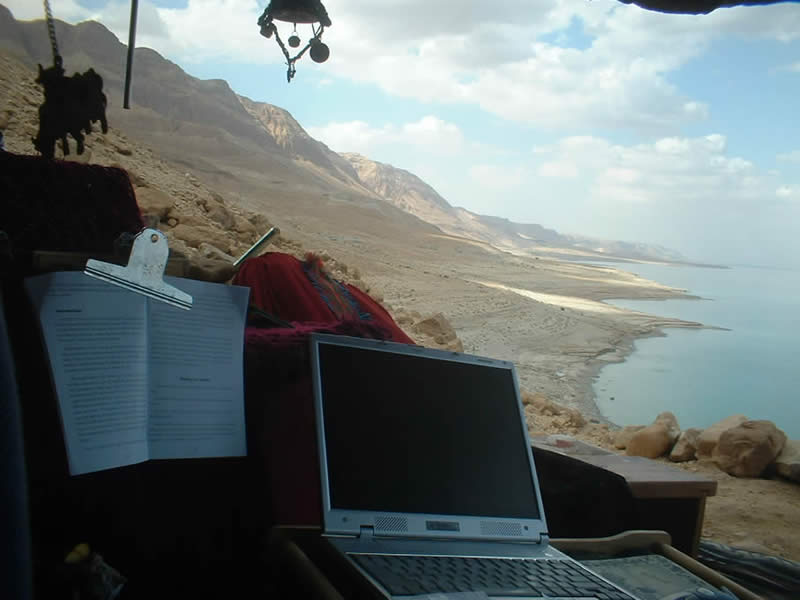
I started to walk or hitchhike once or twice a day to Ein-Gedi Fieldschool
to charge my computer and my mobile phone.
Once I was given a lift by Yehuda Cohen, the Yemenite, as he calls himself.
For 20 years he has been working in the palm tree plantation of his
Kibbutz:
Ein-Gedi.
From him I learnt , what would make a wonderful analogy of the theme
in
Bat-Sheva - David,
but I'll have to be content with simply inserting some of the photos
I made,
when I followed Yehuda's invitation to visit him and to lift up into
the trees.
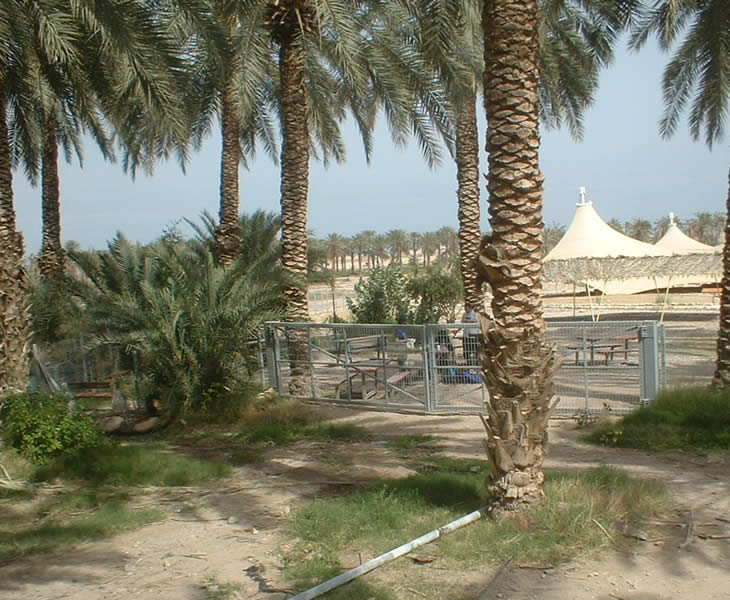 |
The Ein-Gedi Tamar Plantation
was planted next to the ruins
of the ancient Ein-Gedi synagogue,
now protected by a tent.
The bushy tree next to the gate
is a male tree. |
"Date palms come as female and male trees. From earliest
times, fertilization of the female tree has been aided by cutting
off the male flower cluster just before the stamens ripen, then
suspending them among the flowers of the female tree. Today, machines
collect pollen from the male trees, and the pollen is then scattered
by plane or helicopter over the female trees."
Yehuda shows me a male tree, picks
a cluster and scatters its pollen into a container. The fertile
"dust" is sold on the market for much money. I forgot,
how they scatter it over the flowers of the female tree, certainly
not by plane. |
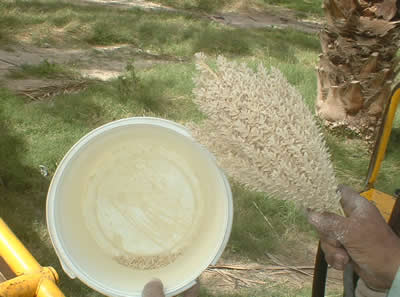 |
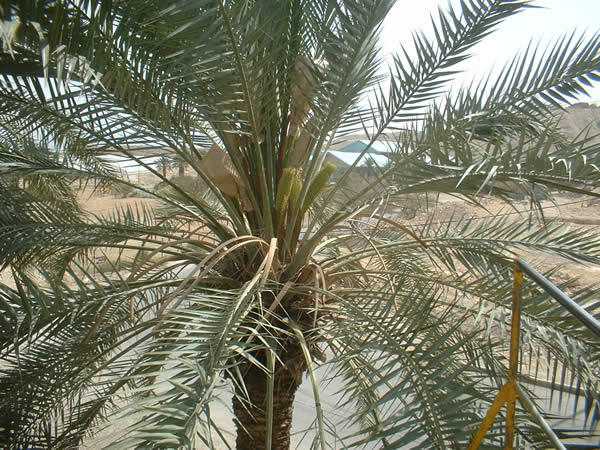 A
lever on a tractor lifts us up to the top of this female tree. A
lever on a tractor lifts us up to the top of this female tree. |
"The date
palm is very prolific. A female date tree may bear 200-1,000 dates
each. A cluster of dates weighs up to 25 pounds (12 kg), and the
annual yield of a single tree may reach 600 pounds (270 kg). The
tree begins to bear good crops during the eighth year and is considered
mature at 30 years. The trunk, marked by the scars of fallen fronds
(branches), grows about 1 foot (30 cm) a year for the first 50
years, after which the rate begins to decrease and few new fronds
are developed. Incredibly, date palms bear fruit annually for
well over 100 years."
|
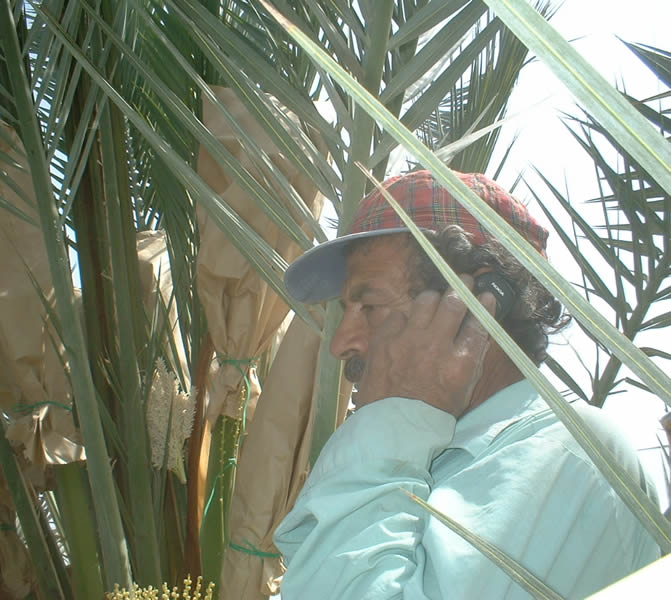
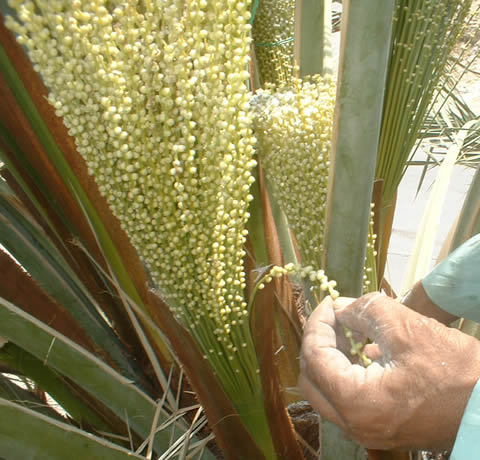 |
High up in the tree Yehuda shows me,
[in between phone-calls....]
how the abundance of female flowers
has to be reduced to 50 stems
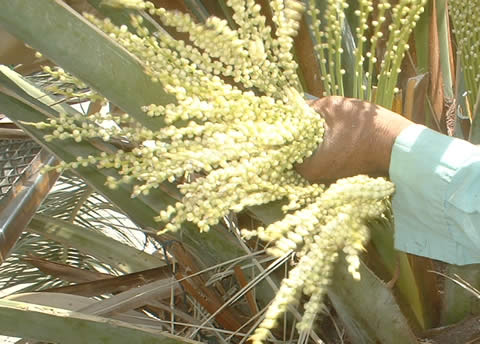
|
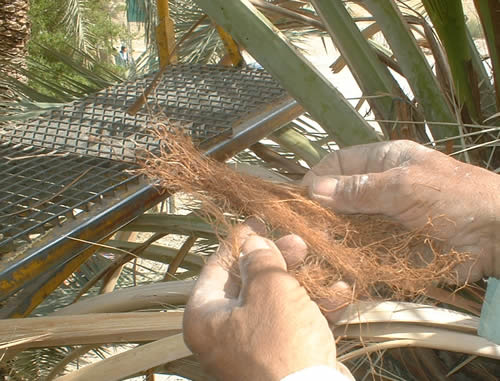
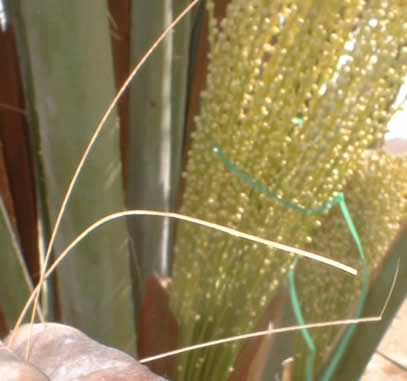
Yehuda shows me two more usable parts
of the palm-tree.
"Every part of
the palm is useful to those who dwell in desert lands.
The fronds are used for roofing, walls and fences, braiding baskets,
wickerwork, mats, and other woven items.
The stout mid ribs are useful as poles for roofing
and constructing simple furniture (in Arabic: gareed)
Ropes
and cords are made from the trunk, leaf and stalk fibers, which are
very strong. "
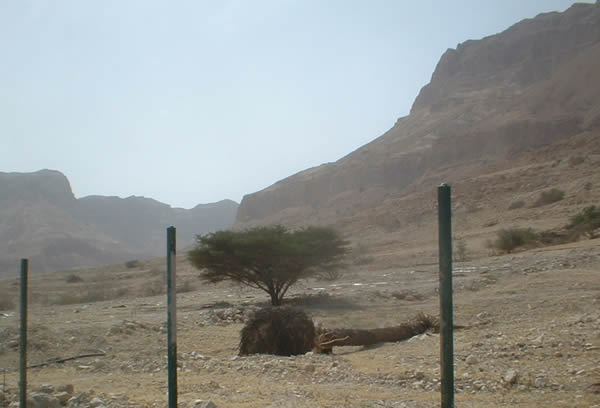
On my way back I discern a fallen trunk next to a "Ziziphus Spina
Christi", my beloved wild "apple-tree".
Walking further back , along the road above the Sea, I discern a bush
bursting forth from the rocks.
I love the tamar tree, but industrial plantations........
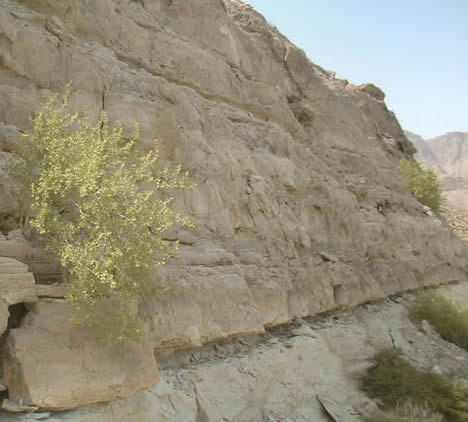
|